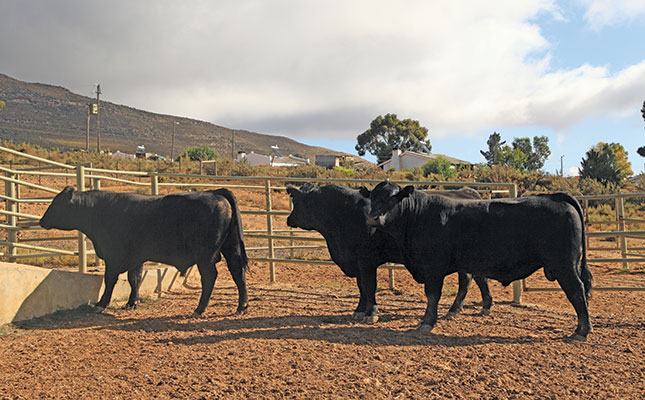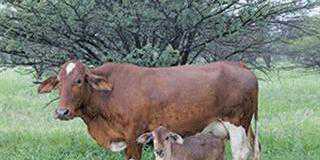
Photo: Glenneis Kriel
Two remarkable scientific developments, namely sexed semen and genomic evaluation (DNA analysis), have proved hugely beneficial to dairies in recent years, thanks to the way they improve selection.
Rebekah Mast, associate vice-president of genetic dairy solutions and talent development at World Wide Sires and Select Sires, explains that genomic evaluations improve the accuracy of genetic predictions, thereby accelerating genetic gains, while sexed semen gives better control over the number of female animals produced, enabling farmers to be more intensive in their selections.
Mast was speaking at the Dairy Management Consulting conference held in August at Durbanville in the Western Cape.
Indeed, so successful are these techniques, that many dairies today end up with an excess of heifers, which then have to be culled.
According to Mast, using sexed semen on a cow increases her chance of producing a heifer to 90%, compared with 50% with conventional semen. Improved calf-rearing systems, in turn, ensure that 90% of these heifers make it to first lactation. With sexed semen, this translates into about 80 replacement heifers in a 100-cow herd, in comparison with only 40 with conventional semen.
“Improved efficiencies have actually created new problems for us, with the average dairy now sitting with a culling rate of 40%. Most heifers, in effect, don’t make it beyond the third lactation, when cows become most profitable, because farmers are eager to use the new genetics coming into the herd,” she explains.
Fortunately, the solution to this problem is already here: the strategic use of beef semen on some of the cows. Beef-dairy crosses, Mast points out, are sold from one day to one week old in the US, with prices ranging from US$50 (about R860) to US$250 (R4 300), depending on the market, type of cross and the buyer’s requirements.
“Farmers need to go the extra mile to unlock premium prices, which are generally associated with more effort and paperwork to ensure traceability. The key is to determine the demand and market potential, and preferably [secure] a supply agreement, before venturing into the production of beef-dairy crosses,” she says.
The use of beef semen and genomic evaluation is not for every dairy, she cautions. An operation should first have a solid foundation of reproduction (good nutrition, management, genetic selection and heat detection). If this is not in place, the full benefits and financial rewards of these technologies will not be realised.
The use of beef semen should also fit into the dairy’s greater genetic strategy.
“Ask yourself: what is my ideal herd size and cow of the future, and how does this affect the number of heifers required as replacement animals now? Having too many heifers shouldn’t be a problem for a farmer who’s in a growth curve,” says Mast.
Thereafter, a detailed breeding strategy should be developed to guide future selections.
“Don’t look at what your neighbour is doing; set goals for your own herd based on what’s best in your production system and under your conditions. Monitor the results and adapt your strategy according to changing circumstances and as new information emerges.”
As part of this, the farmer needs to select the recipient female animals of the beef semen, ideally using genomic testing as it is the most accurate method and therefore gives the best indication of the genetic potential of each animal. Alternatively, selection can be based on herd performance and parent information.
A useful practice, according to Mast, is to reserve sexed semen for high-ranking heifers and for cows in their first and second lactation, and conventional semen for high- ranking older cows. Beef semen can then be used for the bottom group of animals.
Beef breeds
The farmer also has to decide which breed of beef cattle to use on the cows. Mast says that in the US there are many to choose from, with the Angus, Simmentaler, Wagyu and Limousin being the most obvious choices in that country.
According to her, the Angus, which is very popular there, offers a wide diversity of animals from which to choose. It also ranks high for calving ease, offers the maximum growth of all the breeds, and has a high marbling score.
Wagyu also ranks well for calving ease and is in very high demand for marbling on high-end markets. However, the Wagyu gestates for longer and also takes longer to raise a calf.
Simmentaler offers good growth and added muscle, whereas the Limousin ranks well on feed efficiency and has the highest muscle scores.
Some of these breeds earn a higher income than others, with the demand varying from one state to another in the US.
Mast cautions, however, that it is not the price obtained by these offspring that is important, but the effect of using this semen on cow performance and, in the longer run, milk profitability.
“Remember that milk production is your primary revenue. Production of beef animals is merely an add-on.”
Production goals
So, what should be the goals when selecting the breed and the specific animals? Mast says the first aim should be maximum fertility.
“A cow should conceive and produce a calf as soon as possible after she has run dry, as the dairy loses money for every extra day she is not in lactation. The ideal is for her to produce one calf each year.”
Ease of calving should be the second priority. “Jerseys have always been easy [calvers] and we’ve made a lot of progress with Holsteins when it comes to ease of calving. You don’t want to change this [by] using beef semen on some of your cows. No-one likes pulling calves [out] in the middle of the night.”
Mast says research has shown that cows receiving veterinary-assisted calving support produced about 2kg of milk/day less during the lactation that followed than cows that suffered no birthing complications. Using beef semen that results in birth complications will therefore negate the benefit of creating a beef-dairy cross instead of a dairy calf.
Gestation length, too, should be considered, as a long dry period will lead to over-conditioning and metabolic imbalances, which in turn will increase the risk of diseases such as ketosis and milk fever.
Having more animals in a dry period can also lead to overcrowding in dry pens. This increases the risk of two factors: heat stress, which negatively affects unborn calves, and an extended calving season, which can be problematic on a farm using a seasonal calving system. Along with this, each additional day in gestation increases birthweight by 0,09kg/day to 0,36kg/ day, with the risk of birth complications rising each day.
Mast points out that the average gestation for Holsteins across the world is 279 days, while it is 283 days for Jerseys. The average gestation for Angus is 281 days, while it is 287 days for Brangus, 289 for Limousin and Charolais, and 288 for Hereford.
Estimated breeding values
To take the guesswork out of decisions, Mast advises farmers to make use of beef semen from suppliers that provide breeding values for when the beef cattle are used on dairy animals. This is because the expression of beef genetics on beef genetics is different to the expression of beef genetics on dairy genetics.
The most important breeding values for the dairy farmer would therefore be calving ease direct, birthweight and weaning weight to ensure that the selection fits in with the dairy production strategy, and meat qualities such as carcass weight, marbling and rib eye area to ensure that the calves are in high demand on the market.
Mast suggests the use of a genetic calculator to quantify the impact of different genetics and thereby help with decision-making.
Email Rebekah Mast at [email protected], or Chris Fourie at [email protected].









